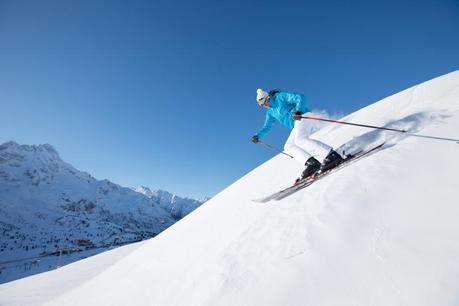
Skiing is an exhilarating sport. The landscapes, wintry weather and potential speed that all combine to make swooping down the slopes such an exquisite thrill are not, however, without their dangers. Every year, many people get injured while skiing. To try and ensure that you are not one of them, below are a number of the most frequent skiing injuries and steps you can take to avoid succumbing to them.
Knee Injuries
These are by far the most common skiing complaints, putting many people off the slopes during the ski season. This is due to the mechanics of the sport. Your legs are essentially locked in position, your legs do the lion’s share of the work, and you may be traveling at speed. There are two common knee injuries. Medial collateral ligament injuries typically affect beginner skiers who, using the snowplough put pressure on their knees, which can sprain when their technique fails. More experienced skiers may suffer an anterior cruciate ligament injury which is a tear of the muscle which can occur when falling at speed. To avoid either of these knee complaints, start preparing for the slopes six weeks in advance by exercising to strengthen your quad muscles. When in the mountains, make sure your bindings are well fitted as loose bindings can aggravate a fall. When you do fall (and you will, at some stage!) try to avoid locking your legs, keeping them flexed. If jumping always land flat on both skis and bend your knees.
Head Injuries
Head injuries – lesions, fractures and concussion are among the most common – often they occur on young skiers who are skiing too fast for their ability, but they pose a risk to anyone traveling at speed. Most head injuries are the result of skiing out of control and hitting a solid obstacle. The most obvious preventative measure is wearing a helmet. There is much discussion about making helmet mandatory, but at present they are not and only 30 percent of skiers wear them. However, doing so will help protect your head. Also, keep you speed down, stay on designated slopes and adhere to slope etiquette to avoid collisions with other skiers.
Skier’s Thumb
Not as serious as the two injuries above, but anyone who’s had skier’s thumb will tell you it can be painful and, worse, keep you off the slopes. Skier’s thumb is a strain of the ligaments around the thumb when a skier falls and does not release their poles. Get in the habit of releasing you poles whenever you fall to avoid potential ligament tears. Also, use simple poles rather than those with platforms of handles, which are harder to release.
